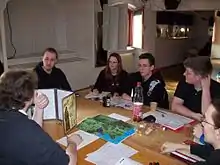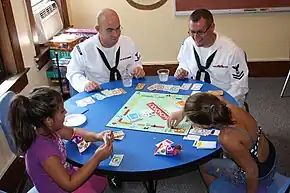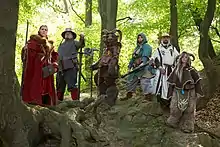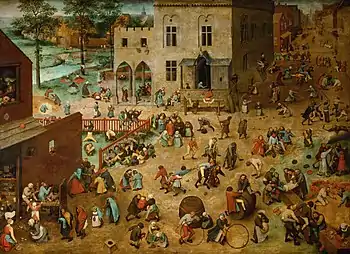Portal:Games
The Games Portal

A game is a structured form of play, usually undertaken for entertainment or fun, and sometimes used as an educational tool. Many games are also considered to be work (such as professional players of spectator sports or games) or art (such as jigsaw puzzles or games involving an artistic layout such as Mahjong, solitaire, or some video games).
Games are sometimes played purely for enjoyment, sometimes for achievement or reward as well. They can be played alone, in teams, or online; by amateurs or by professionals. The players may have an audience of non-players, such as when people are entertained by watching a chess championship. On the other hand, players in a game may constitute their own audience as they take their turn to play. Often, part of the entertainment for children playing a game is deciding who is part of their audience and who is a player. A toy and a game are not the same. Toys generally allow for unrestricted play whereas games present rules for the player to follow.
Key components of games are goals, rules, challenge, and interaction. Games generally involve mental or physical stimulation, and often both. Many games help develop practical skills, serve as a form of exercise, or otherwise perform an educational, simulational, or psychological role. (Full article...)
Selected article -
Backgammon is a two-player board game played with counters and dice on tables boards. It is the most widespread Western member of the large family of tables games, whose ancestors date back nearly 5,000 years to the regions of Mesopotamia and Persia. The earliest record of backgammon itself dates to 17th-century England, being descended from the 16th-century game of Irish.
Backgammon is a two-player game of contrary movement in which each player has fifteen pieces known traditionally as men (short for 'tablemen'), but increasingly known as 'checkers' in the US in recent decades, analogous to the other board game of Checkers. The backgammon table pieces move along twenty-four 'points' according to the roll of two dice. The objective of the game is to move the fifteen pieces around the board and be first to bear off, i.e., remove them from the board. The achievement of this while the opponent is still a long way behind results in a triple win known as a backgammon, hence the name of the game. (Full article...)Did you know? -

- ...that Tom Hanks was in a 1982 TV movie called Mazes and Monsters about a group of college students and their interest in the eponymous role-playing game?
- ...that the golden age of arcade video games began with the release of Space Invaders in 1978?
- ...that the most famous boardwalk in the United States is probably the one in Atlantic City, New Jersey, thanks to its association with the Monopoly board game?
- ...that Pepsi offered a Harrier fighter jet in their Pepsi Billion Dollar Sweepstakes game and the Pepsi Stuff game?
- ...that 1956 was the first time when a computer was able to play a chess-like game, Los Alamos chess (pictured)?
General images
Subcategories
Related portals
WikiProjects
- WikiProject Games
- WikiProject Video games
Things to do
 |
Here are some tasks awaiting attention:
|
Selected picture
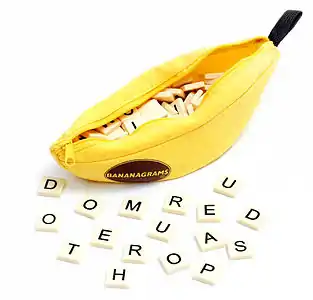
A Bananagrams case and tiles
Associated Wikimedia
The following Wikimedia Foundation sister projects provide more on this subject:
-
 Commons
Commons
Free media repository -
 Wikibooks
Wikibooks
Free textbooks and manuals -
 Wikidata
Wikidata
Free knowledge base -
 Wikinews
Wikinews
Free-content news -
 Wikiquote
Wikiquote
Collection of quotations -
 Wikisource
Wikisource
Free-content library -
 Wikiversity
Wikiversity
Free learning tools -
 Wiktionary
Wiktionary
Dictionary and thesaurus
-
 List of all portalsList of all portals
List of all portalsList of all portals -
 The arts portal
The arts portal -
 Biography portal
Biography portal -
 Current events portal
Current events portal -
 Geography portal
Geography portal -
 History portal
History portal -
 Mathematics portal
Mathematics portal -
 Science portal
Science portal -
 Society portal
Society portal -
 Technology portal
Technology portal -
 Random portalRandom portal
Random portalRandom portal -
 WikiProject PortalsWikiProject Portals
WikiProject PortalsWikiProject Portals
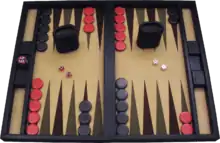

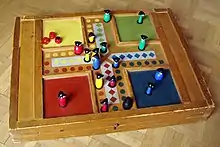
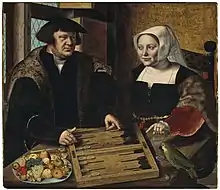
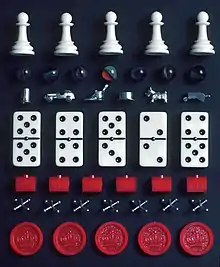
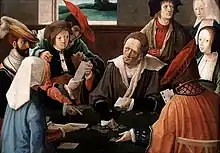
%252C_60_x_73_cm%252C_oil_on_canvas%252C_Courtauld_Institute_of_Art%252C_London.jpg.webp)
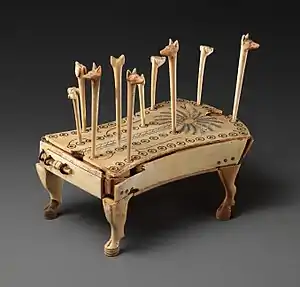

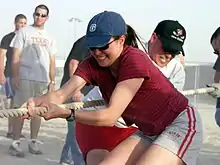
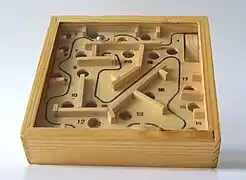



.jpg.webp)
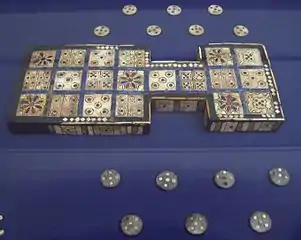
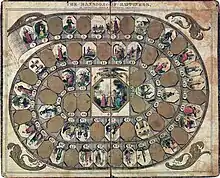
.jpg.webp)
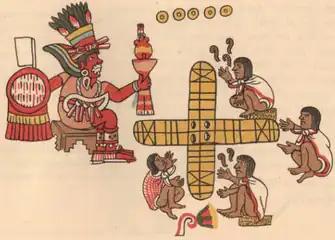
_in_Croatia.2.jpg.webp)

